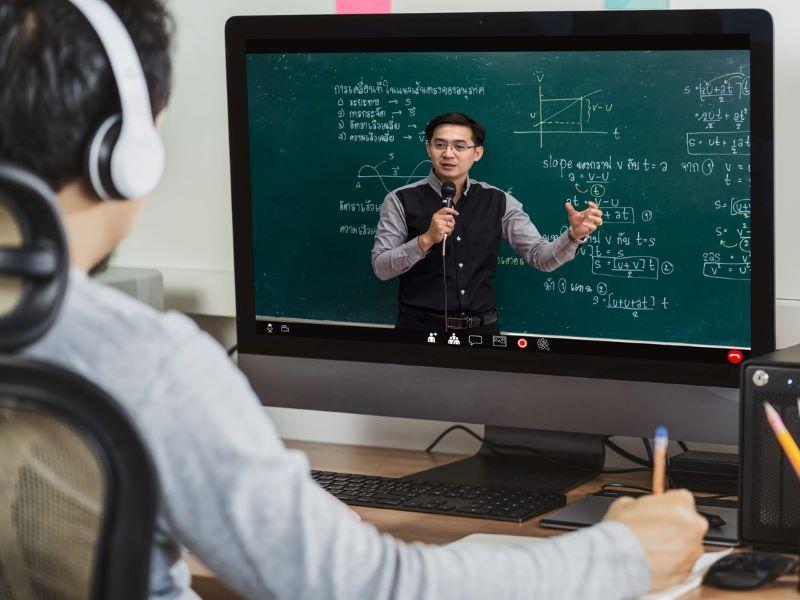
Classroom management strategies to enhance hyflex learning
Effective classroom management strategies that keep students engaged during hyflex courses, by Letitia Bergantz
You may also like
Popular resources
As hyflex courses have gained popularity, issues such as technology use, falling attendance and lack of concentration among students have become apparent. For educators, maintaining order and engaging students across platforms is more difficult when students seem less motivated, fail to follow directions or refuse to turn on their cameras. These challenges have led to experiments in teaching, resulting in the following classroom management strategies for hosting hyflex sessions.
- THE Campus collection: higher education goes hybrid
- Ten useful tips for teaching a hybrid course for the first time
- How to design an online course centred around interactive learning
Strategies to strengthen hyflex sessions
Online classroom management requires a delicate balance, and it is important to set expectations for students across platforms.
1. Model ideal behaviour
Demonstrate the behaviour you want from students by dressing respectably for classes, turning on your camera, clearing out distractions such as mobile phones and computer alerts, maintaining eye contact, not interrupting and staying on topic. These set the tone and conduct for the virtual sessions delivered in hyflex.
2. Test the technology ahead of time
Our institution purchased a site licence for Zoom to be used with hyflex. Zoom skills were practised before teaching commenced, in the classroom fitted with the relevant technology: five tables with monitors and speakers, two large touchscreen monitors – in the front and the back of the class, a swivel camera and a soundbar. IT support offered Zoom training for breakout rooms and offered technical support during the sessions.
3. Flip the session
No one wants to sit on a Zoom call while someone drones on and on. So, consider flipping the session for more interaction among participants. The flipped class can be defined as a hybrid approach that combines online autonomous learning and face-to-face activities in the classroom. Students are tasked with learning relevant content before the live classes, meaning the meeting time can be focused on active learning to build a deeper understanding of the topics. This requires more preparation and effort in the design process – but trust me, your audience will thank you.
4. Assign roles
Select an instructor or technology assistant to facilitate the class, guide it and keep it on track. Choose a “leader” for each stage of the class, who can be assigned ahead of time. Allow time for each key person to give a short, two- to three-minute, personalised outline. This overview can be anything from a short funny video to a slide show of their animals. Have someone manage class questions and discussions within an allotted time so that the instructor can focus on the content. This will build the framework and keep things moving.
5. Send out the agenda
When flipping the classroom, send out an agenda in advance so that everyone knows the class topics ahead of time. Share blogs, podcasts or videos that support students’ preparation for the class discussions or tasks. A clear set of learning objectives provides a structure for the class so students know what is expected, keeping the class focused.
6. Emphasise engagement
Students learn through active participation. Rather than explaining something for 30 minutes, introduce data through a game. Add in a Kahoot! or a survey instead of telling the audience that 14 per cent of teacher candidates were comfortable using technology. Kahoot! is one example of an online gamified pedagogical tool that centres on student engagement and motivation. This fast-paced mode of feedback or assessment enables educators to gauge understanding and discuss why the answers to certain questions are correct or incorrect. Both virtual and in-person class attendees must be able to participate and discuss what they have learned in a supportive environment.
7. Create connections through breakout groups
Break into smaller groups to allow students to share information and engage in purposeful discussions. This creates opportunities for informal conversations and allows students to build trusting relationships. Teams make more effort when they know each other’s names and get more out of their learning experience. When students feel more comfortable with classmates, they are more likely to use their cameras, share ideas and actively engage.
8. Use the webcam and have a dress code
The longer a lecturer or instructor talks, the more cameras turn off and displays are replaced by static images. So encourage the use of webcams to create a sense of community and personal connection. Facial expressions, emotions and reactions are conveyed using the camera and can be helpful when making decisions. A basic dress code makes the virtual environment feel more like business as usual and less like a YouTube video. Treat the webcam like a person and encourage good digital citizenship by drawing class attendees into the conversation.
These classroom management strategies aim to structure live classes with respectful behaviour, clear roles, a focus on active engagement and building connections. By flipping the class and using hyflex technology, the live class sessions can focus on active engagement with the material through discussion with peers both as a whole class and in smaller breakout rooms.
Letitia Bergantz is assistant professor of instructional design at Athens State University.
If you found this interesting and want advice and insight from academics and university staff delivered direct to your inbox each week, sign up for the THE Campus newsletter.




